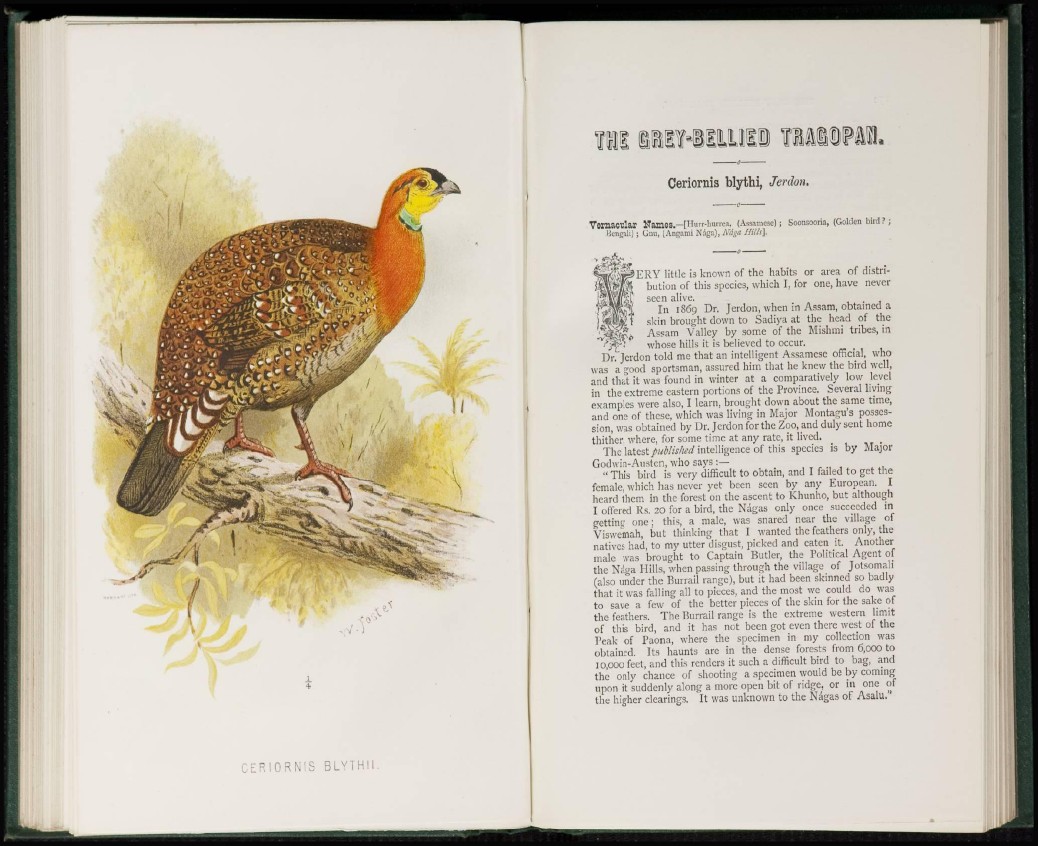
C E R I O R N I S B LYTH 11
Ceriornis blythi, Jerdon.
Vernacular Names.—[Hun-lmrrea. (Assamese) ; Soonsooria, (Golden bird ? ;
Bengali) ; Gnu, (Angami Naga), tV&ga Hills],
ERY little is known of the habits or area of distribution
of tliis species, which I, for one, have never
seen alive.
In 1S69 Dr. Jerdon, when in Assam, obtained a
skin brought down to Sadiya at the head of the
Assam Valley by some of the Mishmi tribes, in
whose hills it is believed to occur.
Dr. Jerdon told me that an intelligent Assamese official, who
was a good sportsman, assured him that he knew the bird well,
and that it was found in winter at a comparatively low levet
in the extreme eastern portions of the Province. Several living
examples were also, I learn, brought down about the same time,
and one of these, which was living in Major Montagu's possession,
was obtained by Dr. Jerdon for the Zoo, and duly sent home
thither, where, for some time at any rate, it lived.
The latest published intelligence of this species is by Major
Godwin-Austen, who says :—
" This bird is very difficult to obtain, and I failed to get the
female, which has never yet been seen by any European, I
heard them in the forest on the ascent to Khunho, but although
I offered Rs. 20 for a bird, the Nagas only once succeeded in
getting one; this, a male, was snared near the village of
Viswemah, but thinking that I wanted the feathers only, the
natives had, to my utter disgust, picked and eaten it. Another
male was brought to Captain Butler, the Political Agent of
the Naga Hills, when passing through tbe village of Jotsomali
(also under the Burrail range), but it had been skinned so badly
that it was falling all to pieces, and the most we could do was
to save a few of the better pieces of tbe skin for the sake of
the feathers. The Burrail range is the extreme western limit
of this bird, and it has not been got even there west of the
Peak of Paona, wrhere the specimen in my collection was
obtained. Its haunts are in the dense forests from 6,000 to
10,000 feet, and this renders it such a difficult bird to bag, and
the only chance of shooting a specimen would be by coming
upon it suddenly along a more open bit of ridge, or in one of
the higher clearings. It was unknown to the Nagas of Asalu."